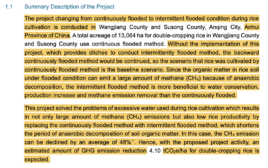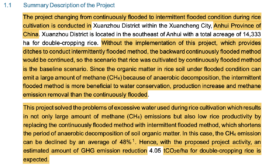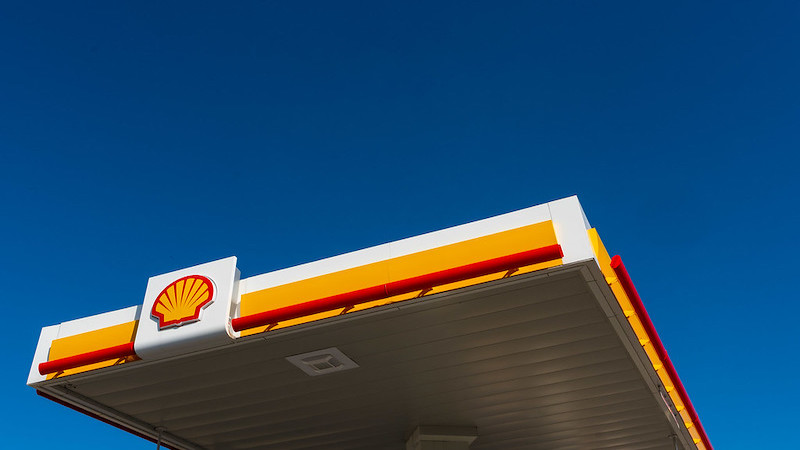Shell’s rice farming offset projects are under review. Climate Home found them riddled with accounting loopholes and questionable integrity claims.
Shell is a partner in a series of contested rice farming offsetting projects in China that could generate millions of worthless carbon credits, Climate Home News has found.
The initiatives are meant to slash methane emissions by changing irrigation methods in rice paddies. But projects in which Shell is involved have implemented a series of accounting tricks that would help them avoid stricter controls.
The oil and gas giant says the projects, certified by the leading carbon standard Verra, reduce greenhouse gas emissions, increase rice productivity, and provide job opportunities – particularly for women.
But their integrity is now under question.
Verra is now carrying out a quality review of its rice farming offsets after identifying a series of concerns with how rules were applied. It also banned any future use of the methodology under which the activities were developed.
Verra has put the projects linked to Shell on hold, pending its review. But the activities have already generated hundreds of thousands of carbon credits, which have been used by fossil fuel giants to compensate for part of their greenhouse gas emissions.
An investigation by Climate Home News has found alarm bells could have rung sooner.
It found rice paddies which are part of Shell’s carbon offsetting projects have allegedly been chopped into smaller plots to avoid stricter rules, according to an analysis of satellite images and emission reductions data.
Additionally, the techniques used are not entirely new, which further undermines their integrity. For nearly two decades, China had already rolled out the methane-reducing irrigation techniques championed by the project.
Governments battle over carbon removal and renewables in IPCC report
Shell acts as a ‘carbon credits broker’ in at least nine of the Chinese rice farming projects currently under review by Verra. The role grants the oil and gas giant the right to either claim the credits against its own emissions or transfer them to other companies, potentially profiting from their sale.
Fossil fuel companies including state-owned PetroChina have purchased more than 450,000 carbon credits issued by the rice farming projects in which Shell is involved. According to Quantum, a carbon market data provider, credits in Chinese rice farming projects have been traded for around $6, meaning that Shell may have pocketed up to $2.7m from their sale.
Gilles Dufrasne, an expert from Carbon Market Watch, says the findings “raise concerns about the quality of the credits”.
“If project proponents are willing to ‘game the system’ in that way, these credits are not worth what they’re supposed to be worth. They should not be used for offsetting emissions”, he added.
Verra said it takes any concerns about the integrity of projects registered in the VCS Program very seriously and is committed to investigating them thoroughly.
A Shell spokesperson told Climate Home News the company is conducting its own internal review.
“We are aware of the review Verra is conducting of some of its rice cultivation projects and will look carefully at the results when they are published. Our diverse portfolio of carbon credits includes rice cultivation,” it added.
Carbon credits form an integral part of Shell’s net zero strategy. The company aims to offset emissions of around 120 million tonnes a year by 2030 with nature-based solutions of “the highest independently verified quality”.
But Shell has also become a major player in producing offsets, as well as buying them. In 2022 it invested $92 million in carbon credits projects.
This line of Shell’s business has repeatedly come under fire. The company’s purchase of forest carbon credits has been a particular focus of controversy. At the same time, however, Shell has been acquiring a primary role in a nascent, and less scrutinised, niche of the carbon credits market: rice farming.
Lowering rice emissions
The farming of rice is a big contributor to climate change. The flooded fields, known as paddies, that rice traditionally grows in, encourage bacteria.
This breaks down decaying plants, turning them into a potent greenhouse gas called methane.
To reduce the damage to the climate and save water, over the last few decades some farmers have started to periodically drain their fields. With less standing water, there are fewer bacteria and less methane.

A rice farmer in a field irrigated with alternate wetting and drying methods. Photo credit: IRRI Photos/Flickr
In the early 2000s, the UN’s official carbon offsetting scheme was set up. Known as the Clean Development Mechanism, it established a set of rules for how to get paid to reduce emissions.
One of these sets of rules was meant to reward rice farmers for reducing their methane emissions, encouraging them to drain their fields.
The scheme was aimed at small communities who wouldn’t otherwise have been able to afford the switch to the more climate-friendly irrigation method.
To encourage small farmers to get involved, the rules allow small-scale projects to face fewer checks and paperwork.
Any project which cuts less than 60 kilo tonnes of carbon dioxide equivalent every year is defined as small-scale.
But announcing a review of the methodology, Verra said it was concerned about how certain projects had been categorised as small-scale, therefore benefitting from looser requirements.
Chopped up rice fields
Climate Home News has analysed all of the 37 rice farming projects that have been registered by Verra using this methodology.
On average they declared annual emission reductions of 58.2 kilo tonnes of CO2. For one of the Shell projects the number is 59.99.
In other words, they manage to qualify as small-scale by a very narrow margin. If they had surpassed the 60 kilo tonnes threshold, they would have not been eligible as carbon credits.
Shell is a partner in at least nine paddy fields offsetting projects in China. They are all located in one of the country’s most important areas for rice production, the Eastern Anhui province.
On paper, the projects are presented as unrelated small-scale initiatives. But, at closer inspection, the similarities are striking. They were all approved on the same day, 29 May 2017, by the same proponent: Hefei Luyu, an agricultural technology company based in the capital of the Anhui province. The documents outlining the project's characteristics are broadly identical to one another and were written by the same Shanghai-based consultancy.


Each of those projects bundles together ten of thousands of disparate farms sitting on either side of the Yangtze river.
Our analysis can point to the close proximity of rice paddies grouped by Hefei Luyu under distinct projects. Climate Home News has identified the geographical location of the farms on satellite images. They show rice paddies intersecting into different projects without clear distinction. As little as 280 metres separate farms belonging to separate projects.
If all of those rice projects were merged into one, they would stretch for over 200 kilometers. They would also sum emissions reductions of over 500 kilo tonnes of CO2 per year, rendering them ineligible to be registered as carbon offsets.

Some of the rice fields included in different offsetting projects are only a few hundred meters away from one another
Verra began registering the projects in 2021 after having the proponent’s claims verified by external certification bodies based in China. Now, nearly two years later, Verra says its review has identified quality issues with the work of the validators.
Verra told Climate Home News it cannot comment on specific projects while they are under review.
Kazunori Minamikawa, a senior researcher at the Japan International Research Center for Agricultural Sciences who has conducted several studies on irrigation methods in rice paddies, believes the projects’ proponent may have artificially divided up fields across several projects to obtain the ‘small-scale’ status.
“They just follow the current rule,” he told Climate Home News. “But I think the developers of AMS-III.AU [the rice cultivation methodology] did not imagine such loophole at that time. To solve the concerns in the short run, Verra should create additional strict rules.”
Hefei Luyu did not respond to a request for comment.
Credits without integrity
The categorisation of a project as small-scale is not a trivial matter. In fact, this grants proponents a series of advantages.
Small-scale projects have more leeway in demonstrating that their type of activity is not already a common practice in the project's region. This key principle is known as additionality.
Under this requirement, a proponent needs to demonstrate that its emission reduction project would not have happened without the money obtained through the sale of carbon credits.
Climate in court: The Paris Agreement’s role in safeguarding human rights
Carbon Market Watch’s Gilles Dufrasne says the concept of additionality underpins the credibility of a carbon offsetting activity.
“The whole logic is that these projects should generate extra emission reductions and that's why they can be used to compensate other emissions somewhere else,” he told Climate Home News. “So it's plus one here, minus one there, it sort of matches up. But if that is not true, it actually leads to an increase in overall emissions. The entire system falls apart”.
The rice farming projects aim to cut methane emissions by helping farmers change irrigation method, switching from continuously flooded paddies to intermittently flooded ones. Thanks to the carbon credits, the projects outline says, farms have been equipped with the cement ditches necessary for the new water regime.
Documents submitted by the proponents claim people in the areas “have poor living standards and economic backwardness”. Therefore, they would have been unable to implement a new methane-cutting irrigation system without the carbon offsetting initiatives. The documents add the additionality findings are based on surveys conducted by a local academy of social sciences.
Climate Home News has not been able to check the claims.
But opinions from experts and scientific literature suggest that the use of intermittent flooding in Chinese rice paddies is not entirely a new concept.
Chris Butenhoff,
Read More







Never miss a story. Join us on social.